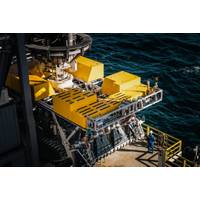
Canada's TMC to Seek Seabed Mining License in 2024
production expected to start as early as the fourth quarter of 2025, it said in a statement.TMC has been at the forefront of efforts to collect polymetallic nodules from the ocean floor, a nascent industry that could boost supplies of metals needed for the global energy transition, including nickel and cobalt.Environmental campaigners say seabed mining could have a catastrophic impact on marine ecosystems and should be delayed at least until the ocean environment is better understood and proper safeguards are in place.TMC said on Tuesday that its subsidiary, Nauru Ocean Resources Inc. (NORI), intended
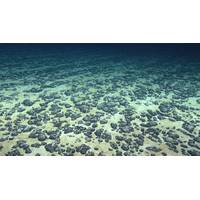
Deep-sea Mining: A New Gold Rush or Environmental Disaster?
In the depths of the Pacific Ocean between Mexico and Hawaii, trillions of potato-shaped rocks are scattered across the seabed - containing minerals such as nickel, cobalt and manganese vital for new green technologies in the global energy transition.In this ocean region - the Clarion-Clipperton Zone (CCZ) - an abundance of the rocks, known as polymetallic nodules, is increasingly fuelling debate about the mining of metals needed to produce technology such as batteries for electric vehicles.Environmentalists say deep-sea mining could cause major damage to ecosystems that scientists know little about
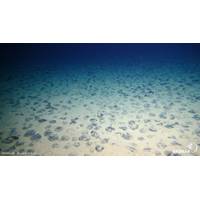
Deep-Sea Mining Threatens Biodiversity 25 Times More Than Land-Based Mining, Report Says
fixing the damage would cost twice as much as extraction, a new report said on Thursday.A search for alternatives to fossil fuels has driven demand for materials that go into batteries, some of which can be found on the seabed where ecosystems have yet to be fully explored.Deep-sea mining would extract cobalt, copper, nickel, and manganese from potato-sized nodules which pepper the sea floor at depths of 4-6 kilometers. The nodules are an essential habitat for many species.The total biosphere impacted by this mining in international waters alone would be up to 75 million cubic kilometers, a greater volume
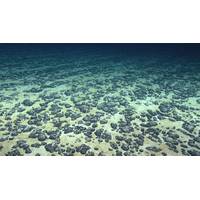
UN to Start Taking Deep-sea Mining Applications This July
The International Seabed Authority will start accepting applications in July from companies that want to mine the ocean's floor, a decision that came after the U.N. body spent the past two weeks debating standards for the new and controversial practice.Deep-sea mining would extract cobalt, copper, nickel, and manganese - key battery materials - from potato-sized rocks called "polymetallic nodules" on the ocean's floor at depths of 4 to 6 km (2.5 to 4 miles). They are abundant in the Clarion-Clipperton Zone (CCZ) in the North Pacific Ocean between Hawaii and Mexico.The ISA's
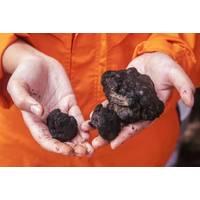
Norway's Loke Buys UK Deep-sea Mining Firm from Lockheed
business," a Lockheed Martin spokesperson said.Through this transaction, Loke becomes the largest holder of licences in the CCZ area spanning 4.5 million square kilometres between Hawaii and Mexico. It declined to disclose the value of the deal.The area is peppered with potato-sized rocks rich in cobalt, copper, nickel, and manganese - key materials for technologies driving the energy transition, such as batteries for electric cars.However, the plans of Loke and some other companies to extract minerals from the ocean floor have been criticized by environmentalists, who say the impact could be devastating
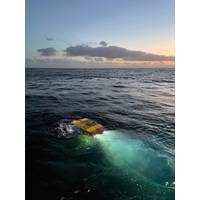
NOC Expedition Seeks Answers on Subsea Mining Impacts
Mining And Resilience To Experimental impact (SMARTEX) project will provide the critical scientific understanding to reduce the risk of extracting these nodules in a 6 million sq km region of the central Pacific Ocean.The polymetallic nodules are highly enriched with metals including copper, nickel, cobalt and manganese. These are important in the construction and development of sustainable technologies such as batteries, electric cars, and renewable energy devices. As such, they are highly sought after across the world. The SMARTEX project will be vital in developing understanding of the impacts of
Transocean's Drillship to be Used for Deep-Sea Mineral Exploration
to combine Transocean’s unique ultra-deepwater operating experience with GSR’s proprietary technology in polymetallic nodule collection to deliver a commercially viable nodule recovery enterprise for GSR," Transocean said.Critical minerals found in deep-sea polymetallic nodules such as cobalt, nickel, copper, manganese, and rare earth metals are essential for many applications, including the production of high-capacity batteries. Transocean CEO: "Deep Sea Minerals are Another Way We'll Provide Essential Energy Services""Many governments and private enterprises

Norway Finds 'Substantial' Mineral Resources on Its Seabed
. The Nordic country, a major oil and gas exporter, is considering whether to open its offshore areas to deep-sea mining, a process that requires parliament's approval and has sparked environmental concerns. "Of the metals found on the seabed in the study area, magnesium, niobium, cobalt, and rare earth minerals are found on the European Commission's list of critical minerals," the Norwegian Petroleum Directorate (NPD), which conducted the study, said in a statement. The resources estimate, covering remote areas in the Norwegian Sea and Greenland Sea, showed there were
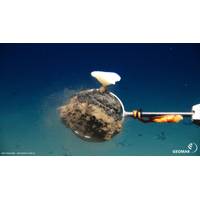
Subsea Mining Plans Pit Renewable Energy Demand Against Ocean Life
manganese nodules from the seafloor.Manganese nodules are roughly the size of potatoes and can be found across vast areas of seafloor in parts of the Pacific and Indian oceans and deep abyssal plains in the Atlantic. They are valuable because they are exceptionally rich in 37 metals, including nickel, cobalt and copper, which are essential for most large batteries and several renewable energy technologies.Manganese nodules form as metals accumulate around a shell or part of another nodule. Thomas Walter/GEOMARThese nodules form over millennia as metals nucleate around shells or broken nodules. The Clarion-Cli



 February 2024
February 2024





